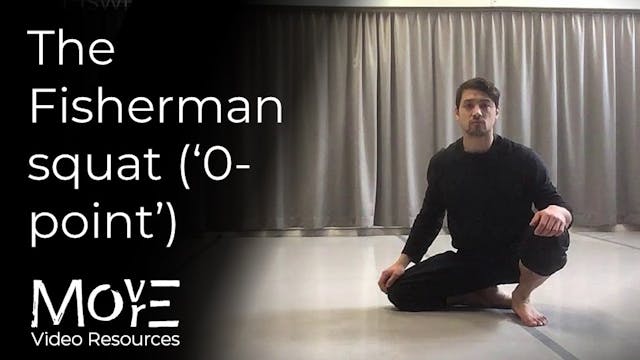The 'Active' Squat
Fundamental squat & hip-mobility development
•
4m 11s
THE WHAT:
The 'Active' squat is a form which is structurally sound to receive load and produce force from (e.g. as in the context of performing a 'Back squat'). Compared to the ‘Passive-squat’, in terms of range it requires LESS knee, hip, and ankle-flexion, although their development is still affected due to the innate intention of the structure and the executional options under bodyweight an optional external-loading.
Whilst teaching a fundamental weight-training form, then, spending time with the ‘Active squat’ is also a great introductory hip & squat-mobility development context for those significantly restricted in the ‘passive-squat’ form.
LEARN MORE (subscriber-only):
Ihttps://drive.google.com/file/d/1MQlli0H95wu3hfaZSssspau5_Q01g_MQ/view?usp=drive_link
__________________________________
For programming, guidance, & support for your physical practice:
FREE fundamental prehabilitation program: https://www.movemoremp.com/
Online Support (1 to 1 coaching): https://movemoremp.com/onlinesupport/
Elements (standardised programs): https://www.movemoremp.com/elements
[email protected]
Up Next in Fundamental squat & hip-mobility development
-
Squat mobility routine 1.0
THE WHAT:
An intensive hip-mobility routine designed to explore various patterns in and develop the ranges of the resting squat position. Along with the likes of 'front-folding' and overhead reaching, it can be truly considered a "fundamentally human" range, in that it has huge carry-over to both... -
The fundamental 'Dragon-Squat'
THE WHAT & HOW:
A static form whose investment begins by developing mobility capacities and conditioning in the lower-body, but ultimately serves as a fundamental 'zero point' through which to transition in bipedal locomotive practice.LEARN MORE (subscriber-only):
https://drive.google.com/file... -
The 'Fisherman squat'
THE WHAT:
The 'fisherman squat' is a fundamental 'zero-point' providing high transitional movement potential through & between the worlds of standing, kneeling, sitting, and floor-contact. It is also a common departure & arrival position for dynamic floor-contact movements, such as rolling, and i...



